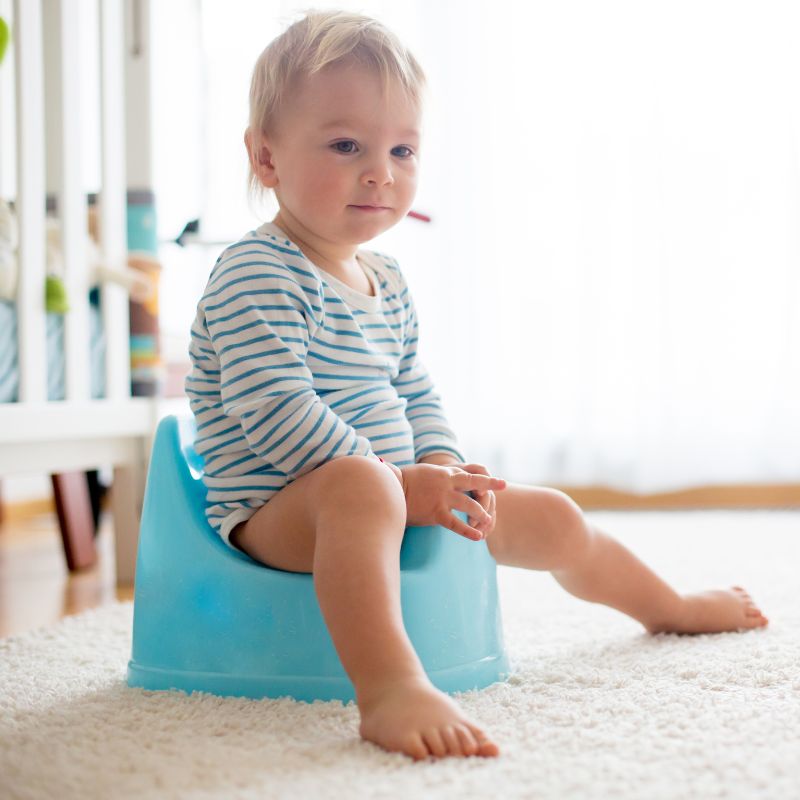
How to Potty Train in 3 Days – Quick and Effective Toilet Training for Toddlers
How to Potty Train in 3 Days
Day 1: Preparation
How to Potty Train – Potty training in three days is an ambitious goal, and it’s important to note that each child is unique, so results may vary. However, here’s a general guide that some parents have found helpful. Keep in mind that consistency, positive reinforcement, and patience are key during the process.
Gather Supplies:
Purchase a potty chair, training pants, wipes, and other essentials.
When gathering supplies for potty training, it’s important to have everything you need to make the process as smooth and comfortable as possible for both you and your child. Here’s a detailed list of supplies:
Potty Chair or Seat Reducer – How to Potty Train:
- Choose a child-sized potty chair or a seat reducer that fits on your regular toilet seat. Some children may feel more secure on a smaller potty chair, while others may prefer using the regular toilet.
Training Pants or Underwear:
- Purchase training pants or underwear with your child’s favorite characters or colors. The transition from diapers to underwear can be more exciting for the child when they have a say in choosing their underwear.
Wipes and Toilet Paper:
- Have a supply of baby wipes or child-friendly toilet paper for cleaning purposes. So encourage your child to wipe themselves after using the potty, promoting independence.
Hand Soap and Hand Towels:
- Place a child-friendly hand soap and small hand towels near the sink. Also teach your child the importance of washing their hands after using the potty.
Books or Toys – How to Potty Train:
- Keep a selection of books or small toys near the potty area. This can make potty time more enjoyable and distract your child while they wait.
19 Month Old Toddler – All you need to know
Stool or Step for Sink:
- If your child has trouble reaching the sink, consider a step stool or step for them to stand on. This helps promote handwashing independence.
Potty Training Chart and Stickers:
- Create a potty training chart where your child can place a sticker each time they successfully use the potty. So this serves as a visual representation of their progress and can be a motivating factor.
Extra Clothing – How to Potty Train:
- Keep extra sets of clothing within easy reach. Accidents are a normal part of the potty training process, and having clean clothes on hand can minimize stress for both you and your child.
Training Potty Liners (if using a potty chair):
- If you opt for a standalone potty chair, consider using disposable liners for easy cleanup.
Potty Training Books or DVDs – How to Potty Train:
- Introduce your child to the concept of using the potty through books or DVDs specifically designed for potty training. These can be educational and entertaining.
Positive Reinforcement Rewards:
- Choose small rewards for your child’s successes, such as stickers, small treats, or a special toy. Positive reinforcement can play a significant role in motivating your child.
Potty Training Pants with Waterproof Layer:
- Consider using training pants with a waterproof layer to contain small accidents. These are designed to feel more like underwear but provide some protection.
Remember that every child is different, and their preferences may vary. By creating a supportive and positive environment with the right supplies, you can help make the potty training experience more successful and enjoyable for your child.
Introduce the Concept – How to Potty Train:
Talk to your child about using the potty. Explain that they are growing up, and it’s time to start using the potty like a big boy or girl.
Introducing the concept of potty training to your child is an essential step in preparing them for this developmental milestone. Here are some detailed steps on how to introduce the concept effectively:
Choose the Right Time:
- Look for signs of readiness in your child, such as showing interest in the bathroom, expressing discomfort with dirty diapers, or staying dry for longer periods. Potty training is most successful when your child is developmentally ready.
Use Simple Language – How to Potty Train:
- Explain the concept in simple terms that your child can understand. Use words and phrases they are familiar with. For example, you might say, “Now that you’re a big boy/girl, it’s time to learn to use the potty like Mommy and Daddy.”
Read Potty Training Books:
- Introduce the idea of potty training through age-appropriate books. There are many children’s books specifically designed to help them understand the process. Reading together can make the concept more relatable and less intimidating.
Watch Potty Training Videos – How to Potty Train:
- Consider showing your child videos or cartoons about potty training. Visual aids can be helpful in reinforcing the idea and making it seem like a normal part of growing up.
Model Behavior:
- Allow your child to see you or older siblings using the toilet. Children often learn by observing, so demonstrating the behavior can make them more comfortable with the idea.
Visit the Bathroom Together:
- Bring your child with you when you use the bathroom. Explain what you’re doing in a positive and casual manner. Answer any questions they may have and make it a shared experience.
Let Them Choose Potty Training Supplies – How to Potty Train:
- Involve your child in the process of choosing potty training supplies, such as a potty chair, training pants, or underwear. This gives them a sense of ownership and excitement about the transition.
Ways to Encourage Good Behavior
Use Positive Language:
- Frame potty training as a positive and exciting step rather than something they have to do. Use phrases like “big boy/girl underwear” and emphasize how proud you’ll be when they use the potty.
Create a Potty Training Routine:
- Establish a routine around potty time. For example, let them know they will use the potty after waking up, before bedtime, and after meals. Consistency helps build a sense of predictability.
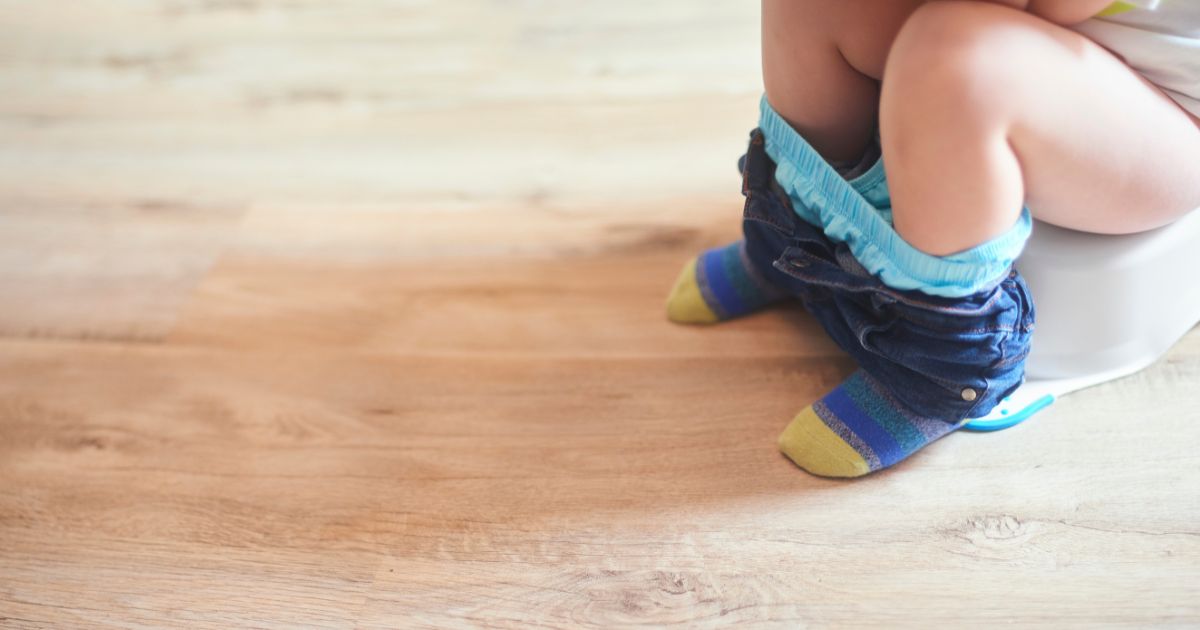
Celebrate Small Achievements – How to Potty Train:
- Praise and celebrate small achievements, even if it’s just showing interest in the potty or sitting on it for a brief period. Positive reinforcement builds confidence and motivation.
Address Fears and Concerns:
- If your child expresses fears or concerns, address them with empathy. Reassure them that using the potty is a normal and positive part of growing up.
Be Patient:
- Recognize that the introduction of the concept is just the beginning. Be patient and allow your child to progress at their own pace. Avoid pressuring or scolding, as this can create negative associations with potty training.
By approaching the introduction of potty training with patience, positivity, and understanding, you can help create a supportive environment that makes the process more comfortable for your child.
Model Behavior – How to Potty Train:
Let your child see you or older siblings using the toilet.
Modeling behavior is a crucial aspect of potty training, as children often learn by observing the actions of those around them. Here are more details on how to effectively model behavior during the potty training process:
Explain the Process:
- Before you begin modeling, explain the process to your child in simple terms. Let them know that using the toilet is a normal part of growing up, and that everyone in the family does it.
Invite Them to Watch – How to Potty Train:
- Invite your child to watch you or an older sibling use the toilet. Use age-appropriate language to describe what you’re doing. You might say, “Look, Mommy is using the potty. It’s where grown-ups go to pee and poop.”
Explain Personal Hygiene:
- Emphasize the importance of washing hands after using the toilet. Show your child how to use soap and water, and make handwashing a routine part of the bathroom experience.
Use Positive Language:
- Maintain a positive and encouraging tone when discussing bathroom activities. Avoid using negative or scary language that could create anxiety around the process.
Demonstrate Flushing – How to Potty Train:
- After using the toilet, demonstrate how to flush. Many children find this part fascinating, and it helps them understand the complete process of using the toilet.
Narrate the Experience:
- As you go through the motions of using the toilet, narrate the experience for your child. This helps them understand the sequence of steps involved.
Include Siblings if Possible:
- If you have older siblings who are already potty trained, involve them in the modeling process. Also younger children often look up to their older siblings and may be more motivated to imitate their behavior.
Make it a Positive Experience – How to Potty Train:
- Keep the atmosphere positive and casual. Avoid making a big deal out of the process, as this can create unnecessary pressure. Make it clear that using the potty is a natural and positive step in growing up.
Answer Questions Calmly:
- Be prepared for questions from your child about the process. Answer their questions calmly and age-appropriately. Encourage them to ask anything they’re curious about.
Celebrate Small Achievements:
- Whenever your child takes an interest in using the potty or attempts to use it, celebrate the small achievements. Positive reinforcement helps build confidence and motivation.
Use Potty Training Dolls or Toys – How to Potty Train:
- Some parents find success in using dolls or toys that can “use” the potty. Demonstrate with the toy, and encourage your child to do the same. This can make the process more playful and less intimidating.
Repeat the Process:
- Consistency is key. Model the behavior consistently, especially during the initial stages of potty training. Repetition helps reinforce the concept and establishes a routine for your child.
Remember that every child is unique, and what works for one may not work for another. Pay attention to your child’s cues and adjust your approach based on their comfort level and readiness. Modeling behavior is just one component of a comprehensive and supportive potty training strategy.
Potty Party – How to Potty Train:
Make the first day exciting. Decorate the potty chair, let your child pick out fun underwear, and maybe even throw a little “potty party.”
A “Potty Party” is a creative and positive way to make the potty training experience exciting for your child. The goal is to create a celebratory atmosphere that encourages them to embrace this new phase of development. Here are more details on how to plan a Potty Party:
Choose a Theme:
- Select a theme for the Potty Party that your child will find exciting. It could be based on their favorite characters, colors, or interests. Popular themes include princesses, superheroes, animals, or even a simple “Big Kid” theme.
Decorate the Potty Area:
- Transform the potty area into a festive and inviting space. Use decorations, balloons, and streamers that match the chosen theme. Make it visually appealing to capture your child’s attention and create a positive association with the potty.
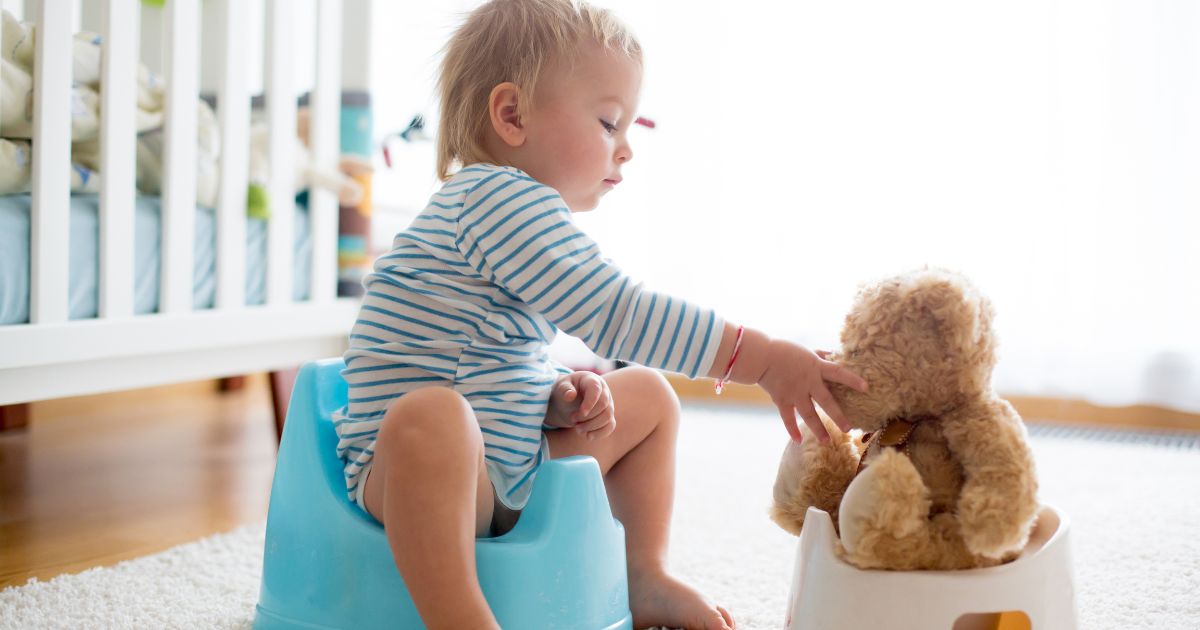
Let Your Child Choose Supplies – How to Potty Train:
- Involve your child in choosing potty training supplies for the party. This could include picking out a special potty chair, selecting fun underwear, or choosing themed wipes and soap. Giving them some control over the process can increase their enthusiasm.
Create a Potty Training Chart:
- Design a potty training chart with your child. Use colorful markers, stickers, and glitter to make it visually appealing. The chart can serve as a visual representation of their progress, with a space to mark each successful potty trip.
Plan Fun Activities:
- Incorporate fun activities related to the theme. For example, you could have coloring sheets, puzzles, or games that reinforce the idea of using the potty. Keep the activities lighthearted and enjoyable.
Sing Potty Songs – How to Potty Train:
- Create or find songs related to potty training and sing them together. Music can be a powerful tool to make the experience memorable and entertaining.
Read Potty Books:
- Read books about potty training during the party. Choose engaging and age-appropriate books that reinforce the importance of using the potty. This can also serve as a helpful educational component.
Potty Training Cake or Treats:
- Bake or buy a special potty training cake or treats for the occasion. Consider using cookie cutters to create shapes related to the theme. Sharing a treat after a successful potty trip can make the experience even more enjoyable.
Invite Stuffed Animal Guests:
- Encourage your child to bring their favorite stuffed animals or toys to the party. Treat these guests as participants in the celebration, creating a supportive and playful atmosphere.
Positive Reinforcement – How to Potty Train:
- Use positive reinforcement throughout the Potty Party. Praise your child for their efforts and celebrate each successful attempt. This positive feedback helps build confidence and enthusiasm.
Take Photos:
- Capture the moments of the Potty Party with photos. This not only creates lasting memories but also reinforces the idea that using the potty is a special and significant achievement.
Sleep Training Mistakes – Top 10 How Your Baby To Sleep Better
Plan a Surprise Ending:
- Consider ending the Potty Party with a surprise or special reward. This could be a small gift, a favorite activity, or another element that adds excitement and anticipation.
Remember that the key to a successful Potty Party is to keep it fun, positive, and age-appropriate. Adjust the level of celebration based on your child’s personality and preferences. The goal is to create a memorable and encouraging experience that fosters a positive attitude toward potty training.
Day 2: Frequent Potty Breaks
Start Early – How to Potty Train:
Begin the day by putting your child in underwear. Encourage them to use the potty first thing in the morning.
Starting early with the potty training process involves preparing your child for this new stage of development and gradually introducing them to the concept of using the potty. Here are more details on how to start early with potty training:
Assess Readiness:
- Look for signs of readiness in your child. These can include staying dry for longer periods, expressing discomfort with dirty diapers, showing an interest in the bathroom, or communicating when they need a diaper change.
Create a Positive Environment – How to Potty Train:
- Establish a positive and supportive atmosphere around the idea of using the potty. Avoid creating any negative associations or pressure. Make it clear that learning to use the potty is a natural and positive step in growing up.
Introduce Potty Concepts:
- Begin talking to your child about using the potty. Use simple language to explain what it is for and why people use it. You can read books about potty training or use educational videos that introduce the concept in an engaging way.
Model Behavior:
- Allow your child to observe you or older siblings using the toilet. Narrate the process in a positive and matter-of-fact manner, making it a shared and normalized experience.
Let Them Choose Potty Supplies – How to Potty Train:
- Involve your child in selecting potty training supplies. Allow them to choose a potty chair, fun underwear, wipes, and any other items they might need. This gives them a sense of ownership and involvement in the process.
Establish a Routine:
- Start incorporating potty time into your child’s routine. For example, have them sit on the potty first thing in the morning or before bedtime. Consistency is key to building familiarity and comfort with the potty.
Use Positive Reinforcement:
- Praise your child for any interest they show in the potty or for attempting to use it, even if they don’t fully grasp the concept yet. Positive reinforcement can include verbal praise, clapping, or a small reward.
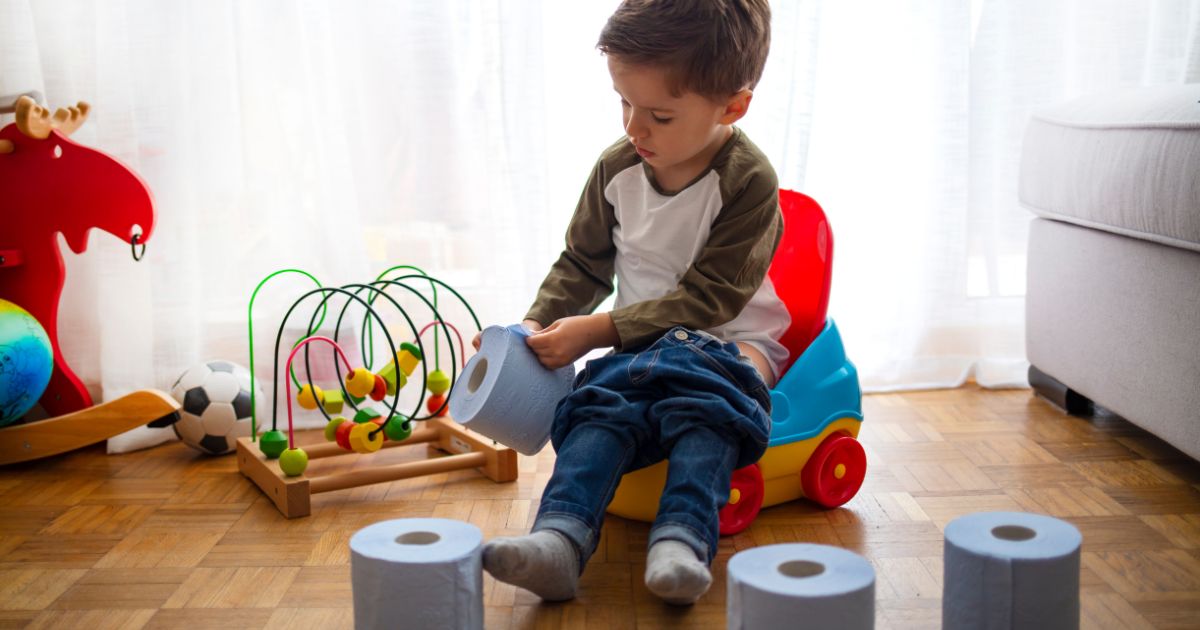
Encourage Independence – How to Potty Train:
- Foster independence by encouraging your child to communicate when they need a diaper change or when they are about to go. Acknowledge their cues and gradually transition to a more independent approach.
Celebrate Small Achievements:
- Celebrate each small achievement, such as successful attempts to use the potty or the ability to communicate their needs. Positive reinforcement and celebrations build confidence and motivation.
Establish a Potty Routine:
- Set specific times for potty breaks during the day. This routine helps your child anticipate when it’s time to use the potty and creates a structured approach to the process.
Use Potty Training Tools:
- Introduce potty training tools such as training pants or pull-ups. These can provide a transitional step between diapers and underwear.
Be Patient:
- Understand that starting early is about gradually introducing the concept and building comfort. Be patient and responsive to your child’s cues. Avoid pushing them too quickly, as every child progresses at their own pace.
Starting early with potty training is a gradual process that involves creating a positive environment, introducing key concepts, and encouraging independence. By taking a gentle and supportive approach, you can help your child feel confident and ready for the next steps in potty training.
Frequent Potty Breaks:
Take your child to the potty every 20-30 minutes throughout the day. Consistency is key.
Implementing frequent potty breaks is a key strategy in the early stages of potty training. This approach helps children build awareness of their bodily functions and establishes a routine for using the potty. Here are more details on how to incorporate frequent potty breaks into the potty training process:
Establish a Schedule – How to Potty Train:
- Set a regular schedule for potty breaks. This could include specific times during the day, such as after waking up, before meals, and before bedtime. Consistency helps your child anticipate when it’s time to use the potty.
Use a Timer:
- Consider using a timer to remind both you and your child about scheduled potty breaks. Set the timer for every 20-30 minutes initially, and gradually extend the time as your child becomes more accustomed to the routine.
Verbal Reminders:
- Remind your child verbally about the upcoming potty break. Use positive and encouraging language, letting them know it’s time to try using the potty.
Make it a Positive Experience:
- Approach each potty break with a positive attitude. Praise your child for attempting to use the potty, regardless of the outcome. Positive reinforcement helps create a positive association with the potty.
Use a Potty Chair:
- If you’re using a potty chair, place it in a convenient and accessible location. Encourage your child to sit on the potty chair during each scheduled break, even if they don’t feel the need to go.
Be Patient:
- Understand that accidents may happen, especially in the early stages of potty training. Be patient and calm if your child doesn’t use the potty successfully during every break.
Offer Independence – How to Potty Train:
- Encourage your child to try using the potty independently. This includes pulling down their pants, sitting on the potty, and attempting to wipe if necessary. Independence is an essential aspect of the learning process.
Use a Potty Training Chart:
- Create a potty training chart where your child can mark each successful potty break with a sticker. This visual representation of progress can be motivating for your child.
Provide Entertainment:
- Keep the potty area engaging by providing books, toys, or other activities. This helps distract your child during the potty break and makes the experience more enjoyable.
Set a Positive Routine:
- Establish a routine around potty breaks that includes positive elements, such as washing hands together, singing a potty song, or offering a small reward for successful potty trips.
Adjust the Schedule as Needed – How to Potty Train:
- Pay attention to your child’s cues and adjust the schedule as needed. If they show signs of needing to go between scheduled breaks, be flexible and allow them to use the potty.
Transition to Independence:
- Gradually transition to more independence as your child becomes comfortable with the routine. Encourage them to let you know when they need to go, and praise them for taking the initiative.
Remember that the goal of frequent potty breaks is to help your child establish a routine, build awareness of bodily functions, and develop the skills needed for successful potty training. Adapt the frequency and approach based on your child’s progress and comfort level.
Positive Reinforcement – How to Potty Train:
Praise your child for using the potty. Use a reward system like stickers or a small treat.
Positive reinforcement is a powerful tool in potty training that involves rewarding and praising your child for desired behaviors, such as using the potty. Here are more details on how to effectively implement positive reinforcement in the potty training process:
Verbal Praise:
- Offer verbal praise immediately after your child uses the potty successfully. Use positive and enthusiastic language to express your approval. For example, say, “Great job using the potty! I’m so proud of you!”
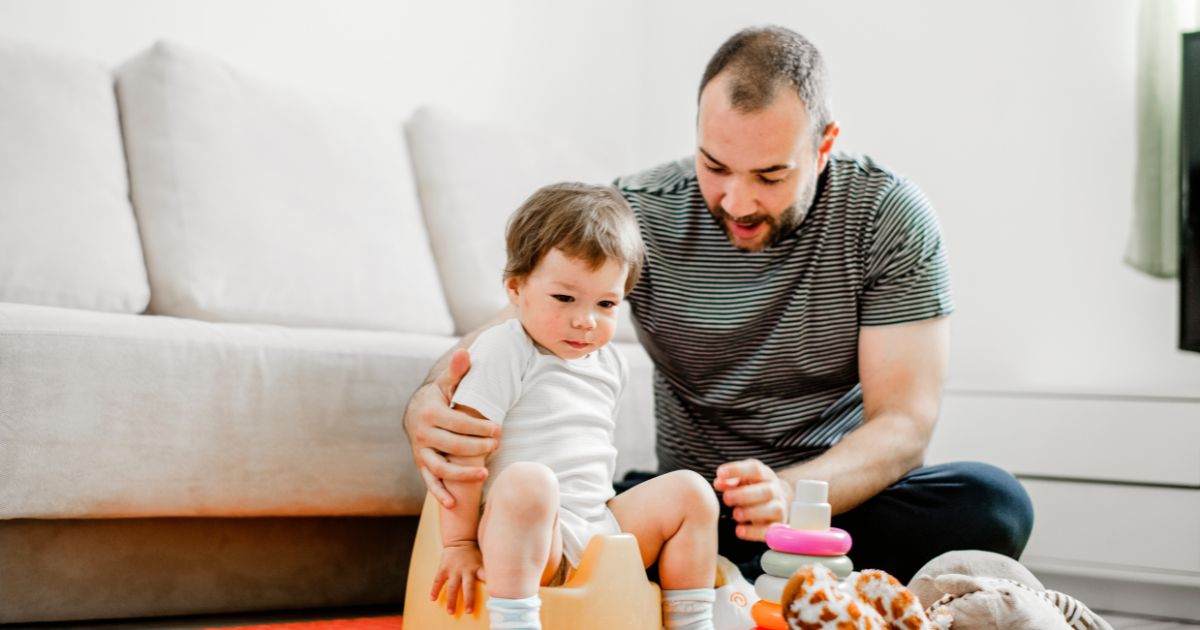
Clapping and Cheers:
- Create a celebratory atmosphere by clapping, cheering, or doing a little dance when your child successfully uses the potty. Make it a fun and exciting moment to reinforce the positive behavior.
High-Fives or Hugs:
- Physical touch, such as giving high-fives or hugs, can be a meaningful form of positive reinforcement. Make it a special moment of connection to show your support and encouragement.
Use Positive Words – How to Potty Train:
- Choose positive and encouraging words when discussing potty training. Avoid negative language or scolding, as it can create anxiety and resistance. Instead, focus on the positive aspects of the process.
Create a Potty Training Chart:
- Establish a visual representation of your child’s progress with a potty training chart. Each successful use of the potty can be marked with a sticker or a checkmark. This not only serves as positive reinforcement but also allows your child to see their achievements.
Small Rewards:
- Offer small rewards for successful potty trips. This could be a special treat, a sticker, or a small toy. The reward should be immediate and something that your child finds motivating.
Praise Effort, Not Just Success:
- Acknowledge and praise your child’s effort in attempting to use the potty, even if they don’t always succeed. Reinforce the idea that trying is an important part of the learning process.
Include Siblings or Peers:
- If your child has siblings or peers who are already potty trained, include them in the positive reinforcement process. Children often look up to their siblings and may feel motivated to emulate their behavior.
Support Your Child’s Routine – How to Using Visual Aids?
Positive Language for Accidents – How to Potty Train:
- When accidents happen, use positive language to address the situation. For example, say, “It’s okay, accidents happen. Let’s clean up and try again next time.” Avoid expressing frustration or disappointment.
Encourage Independence:
- Reinforce your child’s independence by praising them for taking the initiative to use the potty or for communicating when they need to go. This helps build confidence and a sense of accomplishment.
Create a Potty Song or Rhyme:
- Make up a fun and positive song or rhyme about using the potty. Sing it together during potty breaks to make the experience enjoyable and to reinforce positive behavior.
Consistency is Key:
- Be consistent in providing positive reinforcement. Consistency helps your child understand the connection between using the potty and receiving positive feedback, creating a strong motivation for continued success.
Remember that every child is unique, and what works as positive reinforcement may vary from one child to another. Pay attention to your child’s preferences and adjust your approach accordingly. The goal is to create a positive and encouraging environment that fosters a successful and stress-free potty training experience.
Accidents Happen – How to Potty Train:
Expect accidents and handle them calmly. Don’t scold; instead, encourage them to try again.
Accidents are a normal part of the potty training process, and it’s important for parents to handle them with patience, understanding, and positivity. Here are more details on how to address accidents during potty training:
Stay Calm:
- If your child has an accident, stay calm and composed. Avoid expressing frustration or disappointment. It’s crucial to create an environment where your child feels comfortable learning without fear of negative reactions.
Avoid Punishment:
- Never use punishment for accidents. Scolding or punishing a child for accidents can create anxiety and fear associated with the potty, making the training process more challenging.
Use Positive Language – How to Potty Train:
- Frame accidents in a positive light. Instead of saying, “You’re naughty for having an accident,” use language like, “It’s okay; accidents happen. Let’s clean up together and try again next time.”
Offer Reassurance:
- Reassure your child that accidents are a normal part of learning. Let them know that everyone, including adults, had accidents when they were learning to use the potty.
Involve Them in Cleanup:
- Involve your child in the cleanup process. This helps them take responsibility for their actions and learn about the consequences of not using the potty. Keep a positive tone during cleanup.
Maintain Routine:
- Stick to the potty training routine even after an accident. Continue with scheduled potty breaks and positive reinforcement to maintain consistency and help your child move past the accident.
Evaluate Timing – How to Potty Train:
- Reflect on the circumstances surrounding the accident. Consider factors such as how much time has passed since the last potty break, your child’s activities, and any potential distractions. Adjust the potty schedule if needed.
Check for Readiness:
- Assess whether your child might not be fully ready for potty training. If accidents are frequent and your child appears distressed, it might be worth reevaluating their readiness and adjusting your approach accordingly.
Offer Encouragement:
- Encourage your child to try again next time. Reinforce the positive aspects of their efforts and emphasize that accidents are a natural part of the learning process.
Reassess Strategies – How to Potty Train:
- If accidents persist, reassess your potty training strategies. Consider whether the schedule needs adjustment, if there are any new stressors in your child’s life, or if there’s a need to introduce additional positive reinforcement.
Use Accidents as Learning Moments:
- Talk to your child about what happened and why using the potty is important. Reinforce the idea that accidents are opportunities to learn and improve.
Stay Positive and Patient – How to Potty Train:
- Potty training is a journey with ups and downs. Stay positive and patient throughout the process. Celebrate successes and offer support during setbacks.
Remember that accidents are a natural part of the learning process, and it’s essential to maintain a positive and supportive atmosphere. Potty training takes time, and each child progresses at their own pace. By responding to accidents with understanding and encouragement, you help create a positive association with using the potty and contribute to a smoother overall experience.
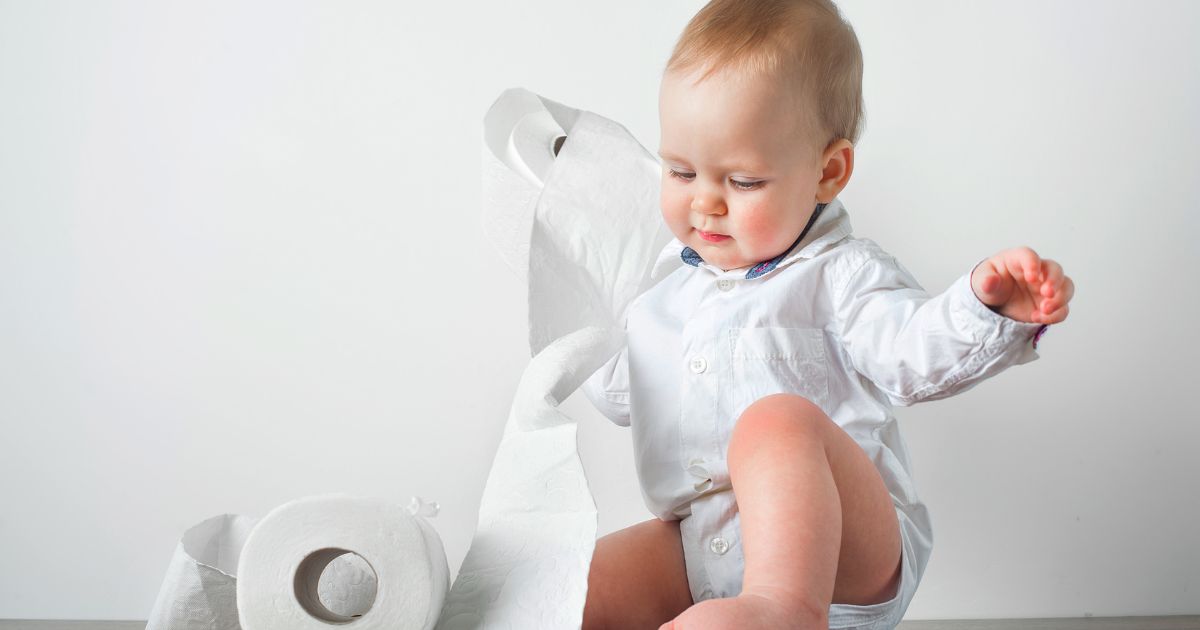
Day 3: Reinforcement and Routine
Continue the Routine:
Stick to the frequent potty breaks. Your child might resist or forget, so gentle reminders are crucial.
Continuing the routine in potty training is crucial for reinforcing consistency and providing a structured environment for your child. Consistency helps children establish habits and expectations, making the learning process more predictable and manageable. Here are more details on how to continue the routine during potty training:
Stick to Scheduled Potty Breaks:
- Maintain the schedule of regular potty breaks throughout the day. Consistency is key to helping your child anticipate when it’s time to use the potty. This consistency also reinforces the connection between the scheduled breaks and successful potty trips.
Use Timers or Reminders – How to Potty Train:
- If necessary, continue using timers or reminders to prompt your child for scheduled potty breaks. This can be especially helpful during the early stages of potty training when your child may still be developing awareness of their bodily cues.
Encourage Independence:
- Support your child in taking more initiative during potty breaks. Encourage them to communicate when they need to go or to express an interest in using the potty independently. Gradually shifting responsibility to your child promotes a sense of autonomy.
Positive Reinforcement:
- Maintain a consistent positive reinforcement system. Continue to praise and celebrate each successful use of the potty. Positive reinforcement helps create a positive association with the potty and encourages your child to repeat the behavior.
Potty Training Chart:
- Keep using the potty training chart to visually track your child’s progress. This chart serves as a tangible representation of their achievements and can be a motivating factor.
Encourage Handwashing – How to Potty Train:
- Include handwashing as a regular part of the routine after using the potty. Reinforce the importance of good hygiene and make it a positive and enjoyable activity by using fun soaps or singing a handwashing song.
Maintain Potty Area Engagement:
- Keep the potty area engaging by providing books, toys, or other activities. These items can help distract and entertain your child during potty breaks, making the experience more enjoyable.
Stay Positive After Accidents:
- If accidents occur, maintain a positive attitude. Reassure your child that accidents happen, and focus on the positive aspects of their efforts. Avoid expressing frustration or disappointment.
Celebrate Milestones:
- Celebrate milestones in the potty training journey. Whether it’s the first time your child communicates the need to go or successfully uses the potty independently, acknowledge and celebrate these achievements to boost their confidence.
Adjust Schedule if Necessary – How to Potty Train:
- Periodically assess the effectiveness of the current schedule. If your child consistently shows signs of readiness at different times or if accidents are occurring frequently, be flexible in adjusting the potty training routine to better suit their needs.
Transition to Underwear:
- As your child becomes more comfortable with the routine and shows consistent success, consider transitioning from training pants to regular underwear. This step reinforces the transition from diapers and contributes to a sense of growing up.

Provide Encouragement and Support – How to Potty Train:
- Continue to provide encouragement and support throughout the process. Potty training can have its challenges, and your positive and patient approach helps create a supportive environment for your child.
Remember that potty training is a developmental milestone, and every child progresses at their own pace. By maintaining a consistent and positive routine, you contribute to a successful and comfortable potty training experience for your child.
Independence:
Encourage your child to let you know when they need to go rather than relying on your prompts.
Encouraging independence in potty training is an important aspect of helping your child develop confidence and autonomy. Here are more details on how to foster independence during the potty training process:
Select Independence-Boosting Supplies:
- Choose potty training supplies that promote independence. This includes a child-sized potty chair or a seat reducer for the regular toilet. Some children may feel more secure with a smaller potty chair, while others may prefer the regular toilet with a step stool.
Allow Them to Choose Supplies – How to Potty Train:
- Involve your child in choosing their potty training supplies. So let them pick out fun underwear, choose a step stool, or select their favorite soap for handwashing. Also giving them some control over the process fosters a sense of ownership.
Teach Basic Clothing Skills:
- Teach your child basic clothing skills needed for using the potty independently. This includes pulling down pants, managing underwear, and eventually pulling up pants. Practice these skills during non-potty times to build familiarity.
Encourage Self-Initiation:
- Encourage your child to let you know when they need to use the potty. Prompt them with questions like, “Do you need to use the potty?” or “Is it time to go to the bathroom?” Reinforce the idea that they can take the initiative.
Offer Choices – How to Potty Train:
- Provide choices related to potty time. For example, ask if they want to use the regular toilet or the potty chair, or if they’d like to wash their hands with a particular soap. Also offering choices empowers your child and makes the experience more enjoyable.
Promote Wiping Independence:
- As your child progresses, encourage them to try wiping themselves. Offer guidance and supervision as needed, but gradually allow them to take on this task independently. Consider using flushable wipes for easier handling.
Use a Step Stool:
- If your child is using the regular toilet, provide a step stool to help them reach the seat and the sink for handwashing. So this promotes independence and makes the bathroom environment more accessible.
Celebrate Self-Initiated Trips:
- Celebrate and praise your child when they take the initiative to use the potty independently. Also positive reinforcement for self-initiated trips encourages them to continue making progress.
Transition to Regular Underwear – How to Potty Train:
- As your child becomes more confident and successful in using the potty, transition from training pants to regular underwear. This step reinforces the move away from diapers and enhances the sense of independence.
Encourage Handwashing Independence:
- Teach your child how to wash their hands independently. So provide child-friendly soap and show them the proper steps for effective handwashing. Also make it a positive and enjoyable routine.
Create a Potty Routine:
- Establish a routine around potty time that encourages independence. This could include a specific order of steps, such as pulling down pants, using the potty, wiping, flushing, and washing hands.
Be Patient and Supportive:
- Patience is key as your child develops independence. Offer support, positive reinforcement, and gentle guidance as needed. Acknowledge their efforts and celebrate their achievements, no matter how small.
Remember that each child develops at their own pace, so it’s important to be flexible and adapt your approach based on your child’s comfort level and readiness. Fostering independence in potty training contributes to your child’s overall development and helps make the transition from diapers to using the toilet a positive and empowering experience.
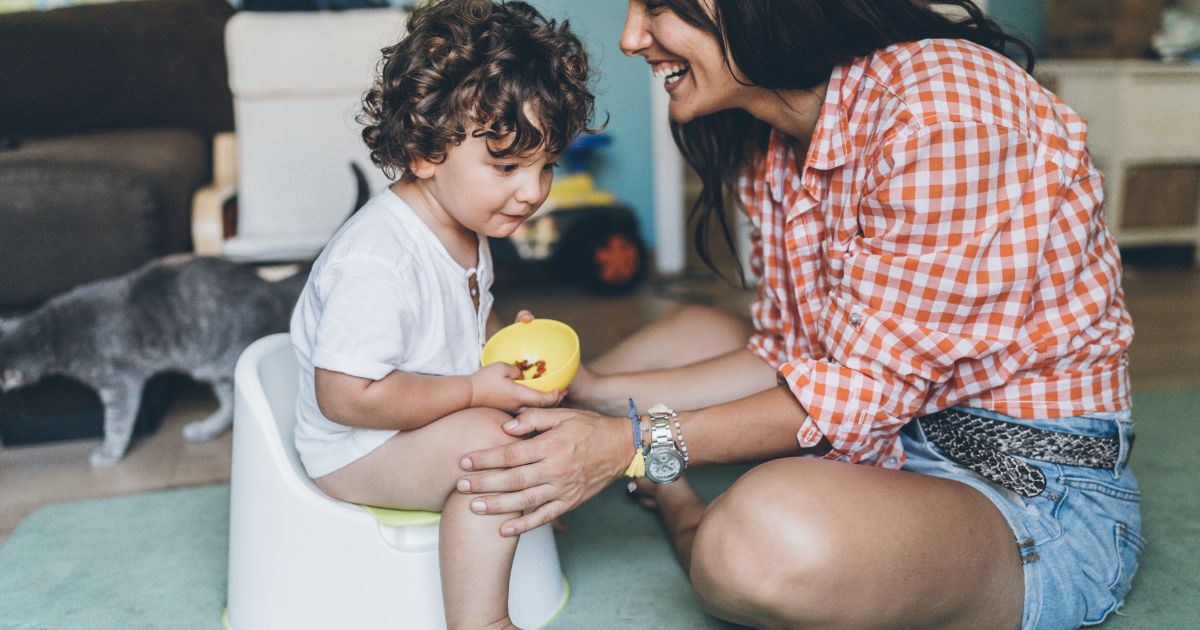
Celebrate Success:
Celebrate every successful trip to the potty. Reinforce the positive behavior.
Celebrating success is a crucial component of potty training, as it reinforces positive behavior and motivates your child to continue their progress. Here are more details on how to effectively celebrate success during the potty training process:
Immediate Verbal Praise – How to Potty Train:
- Offer immediate verbal praise when your child successfully uses the potty. Use positive and enthusiastic language to express your pride and excitement. For example, say, “Great job! You used the potty like a big boy/girl!”
Clapping and Cheering:
- Create a celebratory atmosphere by clapping, cheering, or doing a little dance when your child succeeds in using the potty. Make it a fun and exciting moment that your child looks forward to.
High-Fives or Hugs:
- Provide physical reinforcement by giving high-fives, hugs, or other forms of affection. Physical touch helps reinforce the positive experience and strengthens the bond between you and your child.
Positive Words of Encouragement – How to Potty Train:
- Use positive and encouraging words to reinforce success. Remind your child of their achievements and express confidence in their ability to continue using the potty successfully.
Celebrate Milestones:
- Celebrate significant milestones in the potty training journey. So this could include the first time your child communicates the need to go, successfully uses the regular toilet, or transitions from training pants to regular underwear.
Potty Training Chart Rewards:
- If you’re using a potty training chart, let your child place a sticker on the chart after each successful potty trip. Once the chart reaches a certain number of stickers, offer a special reward or treat to celebrate their accomplishment.
Small Rewards:
- Provide small rewards immediately after successful potty trips. So this could be a sticker, a small treat, or a special privilege. Also the reward should be something that your child finds motivating and enjoyable.
Praise Effort as Well as Success – How to Potty Train:
- Acknowledge and praise your child’s effort in attempting to use the potty, even if they don’t always succeed. Reinforce the idea that trying is an important part of the learning process.
Celebrate Independence:
- Celebrate moments of independence, such as when your child communicates their need to go without prompting or when they take steps to use the potty independently. Emphasize their growing autonomy in the process.
Create a Potty Song or Cheer:
- Make up a fun and positive song or cheer about using the potty. Sing it together during celebratory moments to make the experience enjoyable and memorable.
Take a Potty Graduation Photo – How to Potty Train:
- Capture the moment by taking a “potty graduation” photo. This could be a picture of your child sitting proudly on the potty or holding a sign that celebrates their success. So it creates a lasting memory of this developmental milestone.
Share the Success with Others:
- Share your child’s potty training success with family and friends. So encourage others to join in the celebration and offer their positive reinforcement. Also this external acknowledgment can boost your child’s confidence.
Remember that the key is to make the celebration specific to your child’s preferences and interests. Pay attention to what motivates and excites them, and tailor your celebrations accordingly. Also by consistently celebrating success, you create a positive and rewarding environment that encourages continued progress in potty training.
Nighttime Routine:
If your child seems ready, start introducing the concept of using the potty before bedtime.
Establishing a nighttime routine is essential during potty training to help your child develop consistency and promote successful sleep without disruptions. Here are more details on how to create an effective nighttime routine during potty training:
Limit Fluids Before Bed – How to Potty Train:
- Encourage your child to drink fluids earlier in the evening and limit them closer to bedtime. So this helps reduce the likelihood of nighttime accidents.
Scheduled Potty Break Before Bed:
- Include a scheduled potty break as part of the bedtime routine. Also have your child use the potty before putting on pajamas and getting into bed. This helps ensure their bladder is empty before sleep.
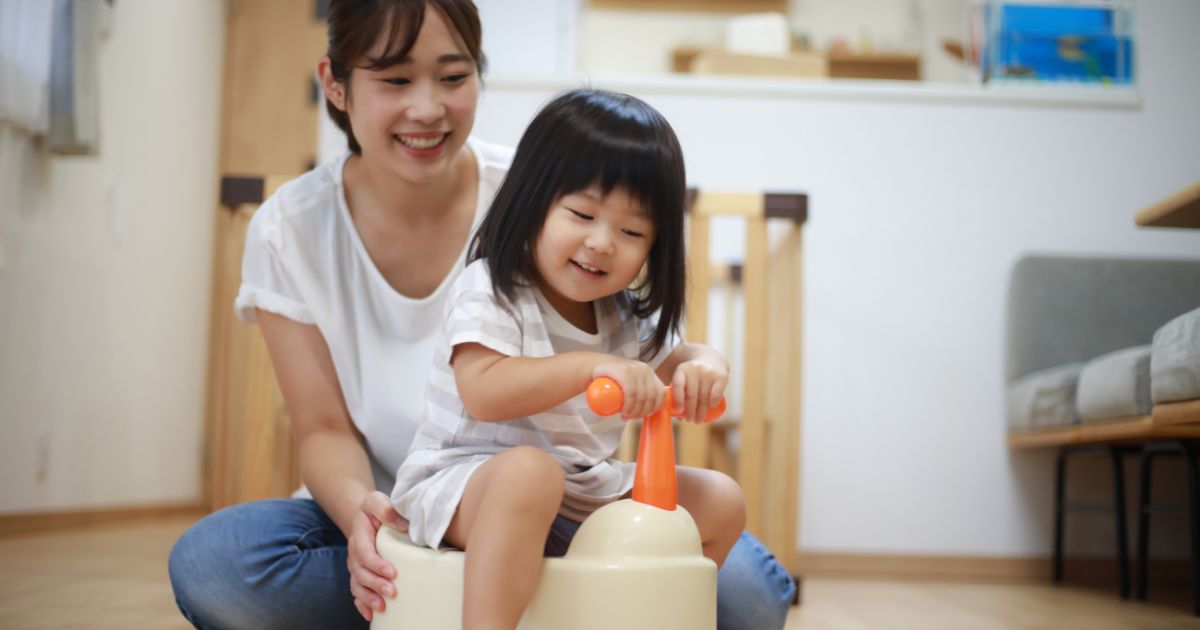
Bedtime Story or Quiet Time:
- Include a calming and relaxing activity before bedtime, such as reading a bedtime story, singing a lullaby, or having a quiet time. So this signals to your child that it’s time to wind down and prepares them for sleep.
Use the Potty Before Lights Out – How to Potty Train:
- Just before turning off the lights, remind your child to use the potty one more time. This additional trip to the bathroom helps minimize the chance of needing to get up during the night.
Nighttime Potty Chair or Access to Bathroom:
- If your child is using a nighttime potty chair in their room, ensure it’s easily accessible. Also alternatively, if they are using the regular bathroom, make sure the path is clear and well-lit to promote independence.
Nightlight in the Bathroom:
- Consider using a nightlight in the bathroom to provide a soft and comforting glow. This helps your child feel more at ease when using the bathroom during the night.
Comfort Items in the Bedroom – How to Potty Train:
- Make sure your child’s bedroom is equipped with comfort items, such as a favorite stuffed animal or blanket. These familiar items can provide a sense of security during the night.
Discuss the Nighttime Routine:
- Talk to your child about the nighttime routine, explaining the importance of using the potty before bed and reassuring them that it’s okay to wake you up if they need to go during the night.
Encourage Independence:
- Encourage your child to take the initiative if they need to use the potty during the night. Also make sure they know how to get to the bathroom or use their nighttime potty chair independently.
Daily Routine for Your Child – How to create?
Offer Positive Reinforcement:
- Praise and positively reinforce your child’s efforts to use the potty during the night. So if they wake up dry in the morning, celebrate their success and emphasize their growing independence.
Use Waterproof Bedding – How to Potty Train:
- Consider using waterproof mattress protectors or disposable underpads to minimize the impact of accidents on the mattress. Also this makes cleanup easier and helps your child feel more comfortable.
Monitor Progress:
- Keep track of your child’s progress in nighttime potty training. If accidents occur frequently, assess whether adjustments to the routine, such as earlier or additional potty breaks, are needed.
It’s important to note that nighttime potty training often takes longer than daytime training. Children may still have accidents during the night even after mastering daytime control. So be patient, provide support, and recognize that nighttime dryness is a developmental milestone that varies from child to child. If concerns persist, consult with your pediatrician for guidance.
General Tips:
Be Patient:
Understand that accidents will happen, and it might take longer for some children to fully grasp the concept.
Being patient is one of the most crucial aspects of successful potty training. Here are more details on how to practice patience during the potty training process:
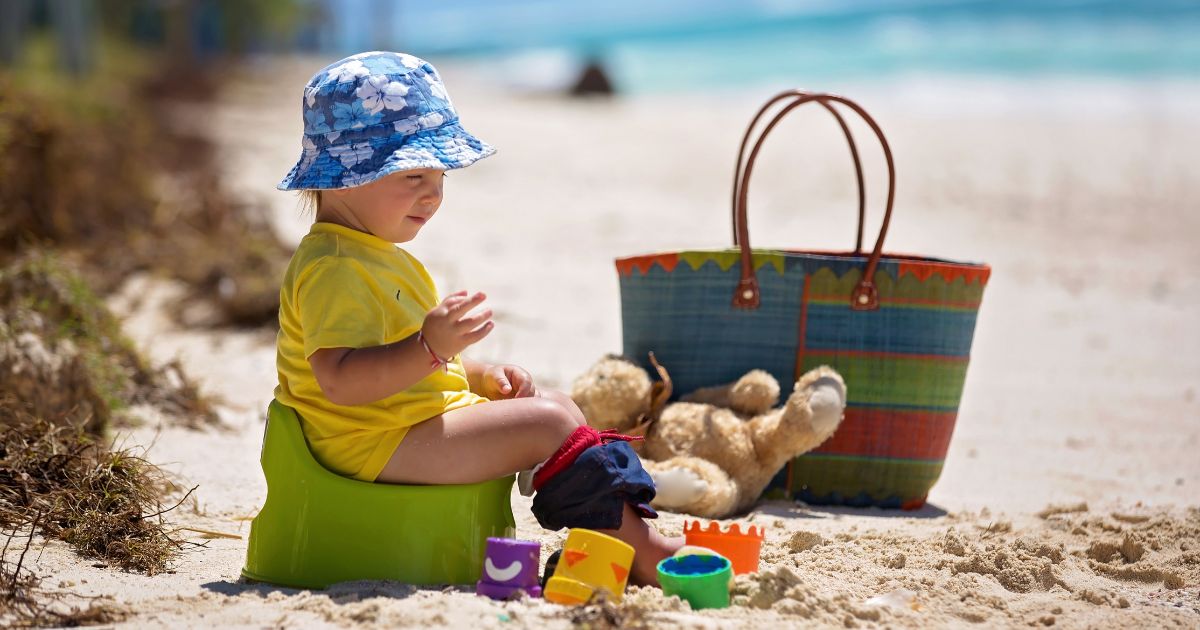
Understand Individual Differences – How to Potty Train:
- Every child is unique, and they develop at their own pace. Recognize and respect your child’s individual differences, both in terms of physical and emotional readiness for potty training.
Be Prepared for Setbacks:
- Potty training is a learning process, and setbacks are normal. Expect accidents and be prepared to handle them with patience and understanding. View setbacks as opportunities for learning and improvement.
Avoid Comparison:
- Avoid comparing your child’s progress to that of other children. Comparisons can create unnecessary pressure and may not accurately reflect the diverse range of potty training experiences.
Celebrate Small Victories:
- Acknowledge and celebrate small achievements. Whether it’s successfully using the potty for the first time, communicating a need to go, or any other positive step, celebrate these victories to build your child’s confidence.
Establish Realistic Expectations – How to Potty Train:
- Set realistic expectations for the potty training timeline. Understand that complete mastery may take time, and your child may progress at a gradual pace. Patience is essential for creating a positive and stress-free experience.
Provide Encouragement:
- Offer continuous encouragement and support. Positive reinforcement goes a long way in motivating your child to embrace the potty training process. Use encouraging words, gestures, and rewards to reinforce their efforts.
Stay Calm During Accidents:
- Accidents are a normal part of potty training. Stay calm and composed when accidents occur. Responding with frustration or impatience may create anxiety and hinder progress.
Adjust Strategies as Needed:
- Be flexible and open to adjusting your potty training strategies. If certain approaches aren’t working or if your child shows signs of discomfort or resistance, consider trying different methods that align with their needs and preferences.
Provide Choices – How to Potty Train:
- Offer choices whenever possible to empower your child. Also this can include letting them choose their potty training supplies, picking out underwear, or selecting a reward for successful potty use. Empowering your child promotes a sense of control and confidence.
Focus on the Positive:
- Direct your attention to the positive aspects of the potty training journey. Rather than dwelling on setbacks or challenges, focus on the progress your child is making and the milestones they achieve.
Be Consistent:
- Consistency is key in potty training, but it requires patience. Also be consistent in your approach, routines, and positive reinforcement. So consistency helps your child establish expectations and feel secure in the learning process.
Seek Professional Advice When Needed:
- If you encounter persistent challenges or concerns, seek guidance from your pediatrician or a child development specialist. Also they can provide personalized advice and support based on your child’s specific needs.
Remember that potty training is a developmental milestone, and the journey may have its ups and downs. Patience, positive reinforcement, and a supportive attitude contribute to a successful and positive potty training experience for both you and your child.
Use Positive Reinforcement – How to Potty Train:
Praise and reward your child for using the potty. Make it a positive experience.
Positive reinforcement is a powerful tool in potty training, helping to encourage and motivate your child by rewarding desired behaviors. So here are more details on how to effectively use positive reinforcement during the potty training process:
Immediate Verbal Praise:
- Offer immediate verbal praise when your child successfully uses the potty. So use positive and enthusiastic language to express your approval. For example, say, “Great job using the potty! I’m so proud of you!”
Clapping and Cheers:
- Create a celebratory atmosphere by clapping, cheering, or doing a little dance when your child succeeds in using the potty. Also make it a fun and exciting moment to reinforce the positive behavior.
High-Fives or Hugs:
- Provide physical reinforcement by giving high-fives, hugs, or other forms of affection. Physical touch helps reinforce the positive experience and strengthens the bond between you and your child.
Positive Words of Encouragement – How to Potty Train:
- Use positive and encouraging words to reinforce success. Also remind your child of their achievements and express confidence in their ability to continue using the potty successfully.
Celebrate Milestones:
- Celebrate significant milestones in the potty training journey. So this could include the first time your child communicates the need to go, successfully uses the regular toilet, or transitions from training pants to regular underwear.
Potty Training Chart Rewards:
- If you’re using a potty training chart, let your child place a sticker on the chart after each successful potty trip. Once the chart reaches a certain number of stickers, offer a special reward or treat to celebrate their accomplishment.
Small Rewards:
- Provide small rewards immediately after successful potty trips. So this could be a sticker, a small treat, or a special privilege. Also the reward should be something that your child finds motivating and enjoyable.
Praise Effort as Well as Success – How to Potty Train:
- Acknowledge and praise your child’s effort in attempting to use the potty, even if they don’t always succeed. Reinforce the idea that trying is an important part of the learning process.
Celebrate Independence:
- Celebrate moments of independence, such as when your child communicates their need to go without prompting or when they take steps to use the potty independently. Emphasize their growing autonomy in the process.
Create a Potty Song or Cheer:
- Make up a fun and positive song or cheer about using the potty. Sing it together during celebratory moments to make the experience enjoyable and memorable.
Take a Potty Graduation Photo:
- Capture the moment by taking a “potty graduation” photo. So this could be a picture of your child sitting proudly on the potty or holding a sign that celebrates their success. Also it creates a lasting memory of this developmental milestone.
Share the Success with Others – How to Potty Train:
- Share your child’s potty training success with family and friends. Also encourage others to join in the celebration and offer their positive reinforcement. So this external acknowledgment can boost your child’s confidence.
Remember that the key is to make the reinforcement specific to your child’s preferences and interests. Pay attention to what motivates and excites them, and tailor your positive reinforcement accordingly. Also by consistently using positive reinforcement, you create a positive and rewarding environment that encourages continued progress in potty training.
Math Playground – Excellent Games for Kids
Stay Consistent:
Consistency is key. Keep a routine, and make sure everyone involved (parents, caregivers) is on the same page.
Consistency is a key factor in successful potty training. So here are more details on how to stay consistent throughout the potty training process:
Establish a Routine – How to Potty Train:
- Set a consistent potty training routine by scheduling regular potty breaks. This includes specific times during the day, such as after waking up, before meals, and before bedtime. Consistency helps your child anticipate when it’s time to use the potty.
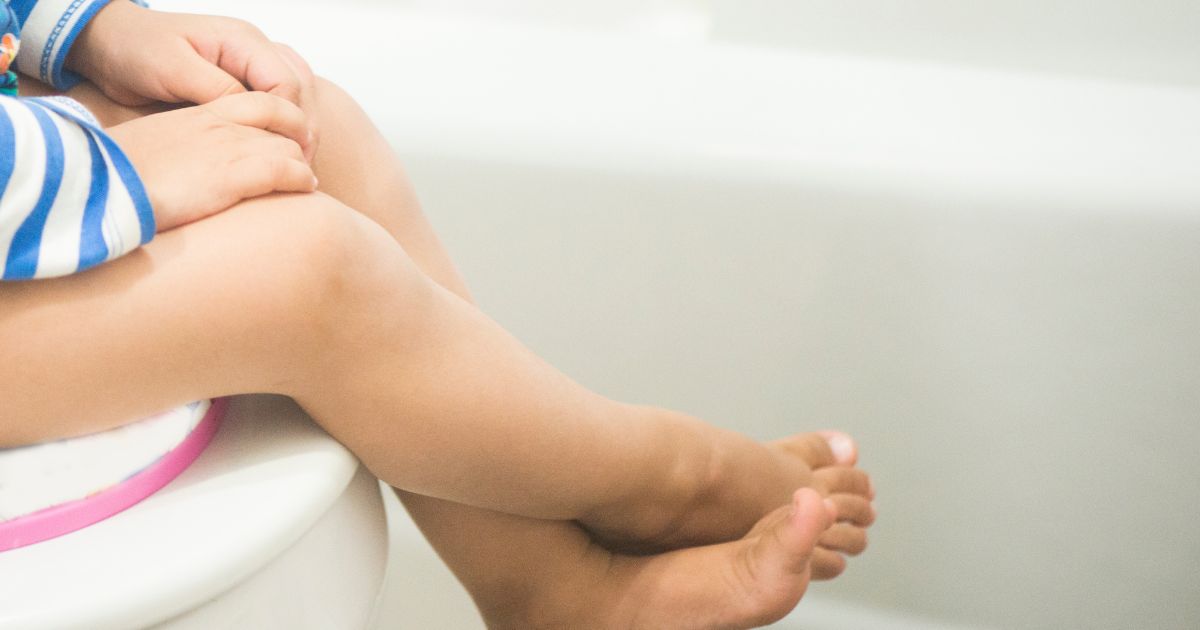
Use the Same Potty Chair or Seat Reducer:
- Whether you’re using a potty chair or a seat reducer on the regular toilet, be consistent with the choice. Also familiarity with the potty equipment contributes to your child’s comfort and confidence.
Consistent Language:
- Use consistent and clear language when talking about the potty. So develop a set of simple phrases or words that your child can easily understand. For example, use phrases like “It’s time to use the potty” or “Do you need to go to the bathroom?”
Positive Reinforcement:
- Be consistent in providing positive reinforcement for successful potty trips. Also use the same words of praise, gestures, or rewards each time to create a predictable and positive association with using the potty.
Consistent Handwashing Routine – How to Potty Train:
- Include a consistent handwashing routine after using the potty. So reinforce the importance of cleanliness and make handwashing a non-negotiable part of the potty routine.
Independence Encouragement:
- Encourage independence consistently. If your child is taking steps toward using the potty independently, praise and reinforce this behavior every time. Also consistent positive reinforcement reinforces the desired habits.
Use a Potty Training Chart:
- If you’re using a potty training chart, stay consistent in its use. Allow your child to place a sticker on the chart after each successful potty trip, and consistently reward them when the chart reaches a certain milestone.
Consistent Clothing Choices – How to Potty Train:
- Dress your child in consistent clothing that allows for easy and quick access to the potty. This helps minimize potential delays when they need to use the bathroom.
Reaction to Accidents:
- Respond to accidents consistently with a calm and understanding demeanor. Avoid expressing frustration or disappointment, and instead, reassure your child that accidents happen, and you’ll clean up together.
Consistent Communication:
- Maintain consistent communication about the potty training process. Talk to your child about the importance of using the potty, and encourage them to communicate when they need to go.
Nighttime Routine:
- If you’re implementing nighttime potty training, stay consistent with the bedtime routine. Include a scheduled potty break, limit fluids before bedtime, and ensure your child knows the process for using the bathroom during the night.
Consistent Transition to Underwear – How to Potty Train:
- When you decide to transition from training pants to regular underwear, stay consistent with this change. Explain the transition to your child, and reinforce the idea that underwear is for big kids who use the potty.
Consistency provides a sense of predictability and stability for your child during the potty training process. So by maintaining a consistent approach, you help your child understand expectations, build habits, and feel secure in their learning environment. Also remember that consistency is a gradual process, and it’s okay to make adjustments as needed based on your child’s progress and individual needs.
Make it Fun – How to Potty Train:
Turn potty time into a positive and fun experience. Consider using books, songs, or games to make it enjoyable.
Also making potty training a fun and engaging experience can motivate your child and create positive associations with using the potty. Here are more details on how to make potty training enjoyable:
Use Fun Potty Training Supplies:
- Choose potty training supplies that are colorful and appealing to your child. So this could include a whimsically designed potty chair, fun toilet paper, or soap with their favorite characters.
Decorate the Potty Area:
- Decorate the bathroom or the potty training area with your child’s favorite stickers, wall decals, or posters. So creating a visually appealing and personalized space can make using the potty more exciting.
Potty Training Books or Videos – How to Potty Train:
- Introduce potty training books or videos that are entertaining and educational. So there are many resources available that feature characters going through the potty training process. Also read books together or watch videos that make the experience fun.
Potty Training Songs and Rhymes – How to Potty Train:
- Create a fun potty training song or rhyme. Also singing a catchy tune can make the potty routine enjoyable and memorable. You can invent your own song or find potty training songs online.
Use Potty Training Apps:
- Consider using interactive potty training apps that are designed for children. So these apps often include games, songs, and animated characters that can make the learning process entertaining.
Potty Training Games – How to Potty Train:
- Turn potty time into a game. Use games or activities to keep your child engaged during the process. For example, you can have a “potty time” game where they toss a ball into a basket or use potty-themed board games.
Reward System with Fun Prizes:
- Implement a reward system with fun prizes. So create a treasure chest filled with small toys, stickers, or other goodies. Allow your child to pick a reward after each successful potty trip.
Potty Training Chart with Stickers – How to Potty Train:
- Use a potty training chart with colorful stickers. Also let your child place a sticker on the chart after each successful potty use. Watching the chart fill up can be a fun and visual way to track their progress.
Potty Training Celebration:
- Plan a special celebration for reaching potty training milestones. So it could be a small party, a special treat, or a fun outing. Celebrating achievements reinforces positive behavior.
Make Up a Potty Dance:
- Create a silly and fun potty dance that you can do together. So perform the dance after successful potty trips to make the experience lighthearted and enjoyable.
Include Favorite Characters – How to Potty Train:
- Incorporate your child’s favorite characters into the potty training process. Also if they have character-themed underwear or a potty chair, it can make the experience more exciting.
Positive Language and Encouragement – How to Potty Train:
- Use positive and encouraging language consistently. So reinforce the idea that using the potty is a big-kid achievement and celebrate their efforts with words of praise and encouragement.
Remember that the key is to tailor the fun elements to your child’s interests and preferences. Also by making potty training enjoyable, you can reduce resistance, increase motivation, and create positive memories associated with this developmental milestone.
Watch for Signs of Readiness:
Look for signs that your child is ready to start potty training, such as showing interest in the toilet, staying dry for longer periods, or expressing discomfort with dirty diapers.
Watching for signs of readiness is crucial for determining when to begin potty training. So here are more details on specific signs of readiness to look for in your child:
Interest in the Potty:
- Your child shows curiosity about the potty or the bathroom. Also they may express interest in watching others use the toilet, flushing, or understanding where waste goes.
Communication Skills:
- Your child has developed some communication skills and can express basic needs. They may use words or gestures to indicate when they need a diaper change or show awareness of bodily functions.
Stable Walking:
- The ability to walk steadily is an important physical milestone. So if your child can walk confidently and has a stable gait, they may be physically ready for potty training.
Interest in Independence – How to Potty Train:
- Your child is showing signs of wanting to do things independently. Also this could include wanting to dress or undress themselves, expressing a desire for autonomy, or asserting their independence in other ways.
Awareness of Wet or Dirty Diapers – How to Potty Train:
- Your child shows discomfort with wet or dirty diapers. They may communicate displeasure when their diaper is soiled and may start to exhibit signs of wanting a diaper change.
Extended Periods of Dryness:
- You notice that your child’s diaper stays dry for longer periods, indicating that they may have better bladder control and can hold their urine for a more extended time.
Expressing the Need to Go – How to Potty Train:
- Your child may start to communicate the need to go to the bathroom. This could involve verbalizing the urge to use the potty or displaying specific behaviors, such as holding their diaper or squatting.
Consistent Bowel Movements:
- Your child may establish a regular pattern for bowel movements. Predictable bowel movements can make it easier to anticipate when they might need to use the potty.
Interest in “Big Kid” Activities – How to Potty Train:
- Your child may express interest in activities associated with being a “big kid.” So this could include wearing underwear like adults or imitating other family members using the toilet.
Ability to Pull Down Pants:
- If your child can pull down their pants and pull them back up, it’s a sign of developing motor skills necessary for using the potty independently.
Ability to Follow Simple Instructions – How to Potty Train:
- Your child demonstrates the ability to follow simple instructions. Also being able to understand and follow basic directions is important for success in potty training.
Positive Role Models:
- If your child has positive role models, such as older siblings or friends who are using the potty, they may show increased interest and readiness to join in these behaviors.
It’s important to note that every child is unique, and signs of readiness can vary. Some children may exhibit these signs earlier or later than others. Additionally, readiness is not an all-or-nothing concept; your child may show some signs before others. So paying attention to your child’s cues and responding to their readiness is key to a smoother potty training experience.
Conclusion – How to Potty Train
In conclusion, potty training is a developmental milestone that requires patience, consistency, and a positive approach. Also by watching for signs of readiness, introducing the concept gradually, and making the experience fun, you can create a positive environment for your child to learn and embrace this new skill.
Gathering the right supplies, modeling appropriate behavior, and celebrating success with positive reinforcement all contribute to a successful potty training journey. Recognizing that accidents happen, maintaining a consistent routine, and fostering independence in your child further enhance the learning process.
As you navigate through potty training, remember that each child is unique, and the process may unfold at their own pace. Also be patient, stay consistent in your approach, and offer plenty of encouragement and support. So celebrate the small victories, and keep in mind that potty training is a significant step toward your child’s growing independence.
Above all, approach potty training with a sense of humor and understanding. It’s a time of exploration and learning for your child, and a positive and supportive attitude will contribute to a successful and enjoyable experience for both you and your little one.
Read also – Business Compiler

Your article helped me a lot, is there any more related content? Thanks!
Thank you for some other informative blog. Where else could I get that type of information written in such an ideal approach? I’ve a challenge that I am simply now running on, and I have been on the glance out for such information.